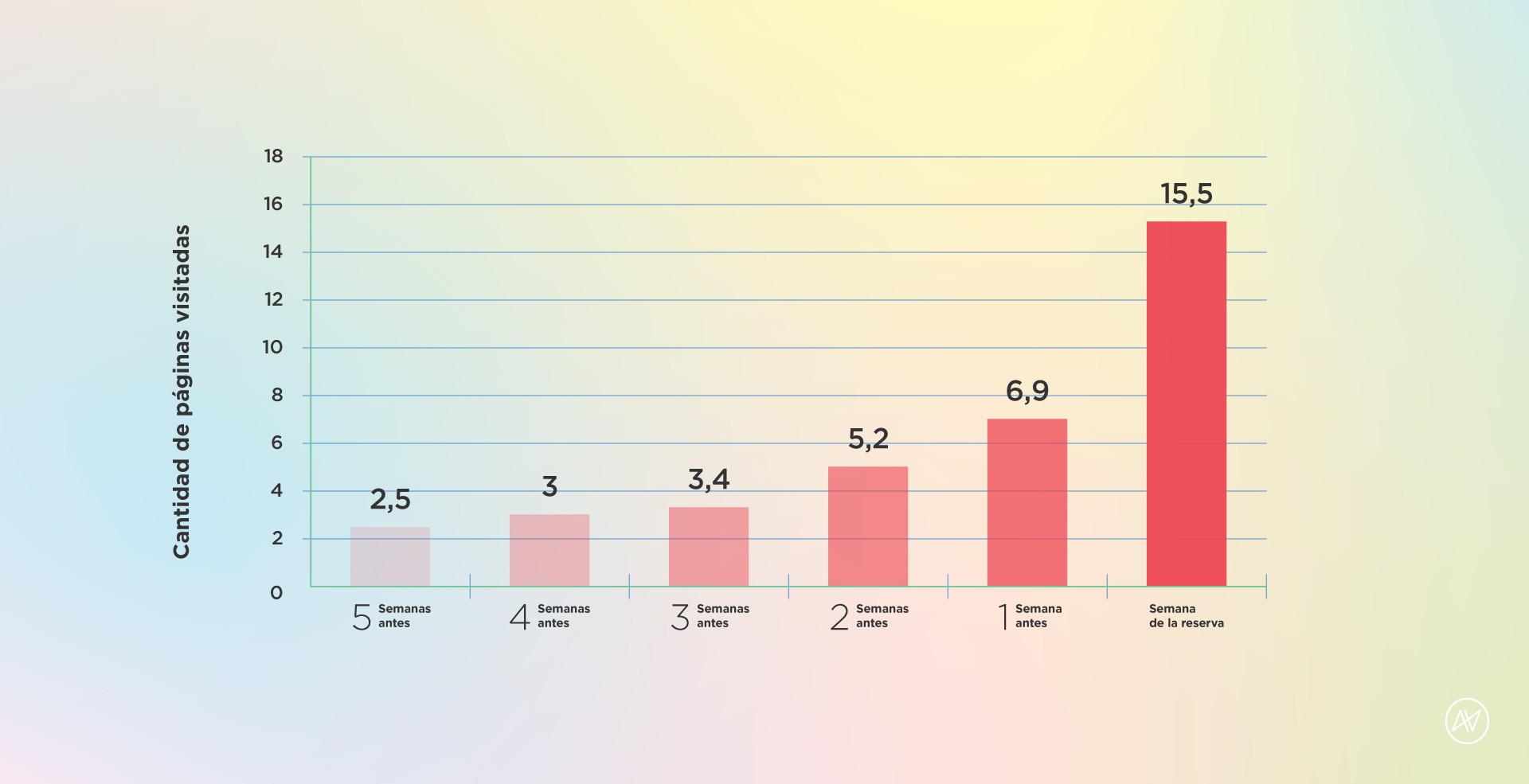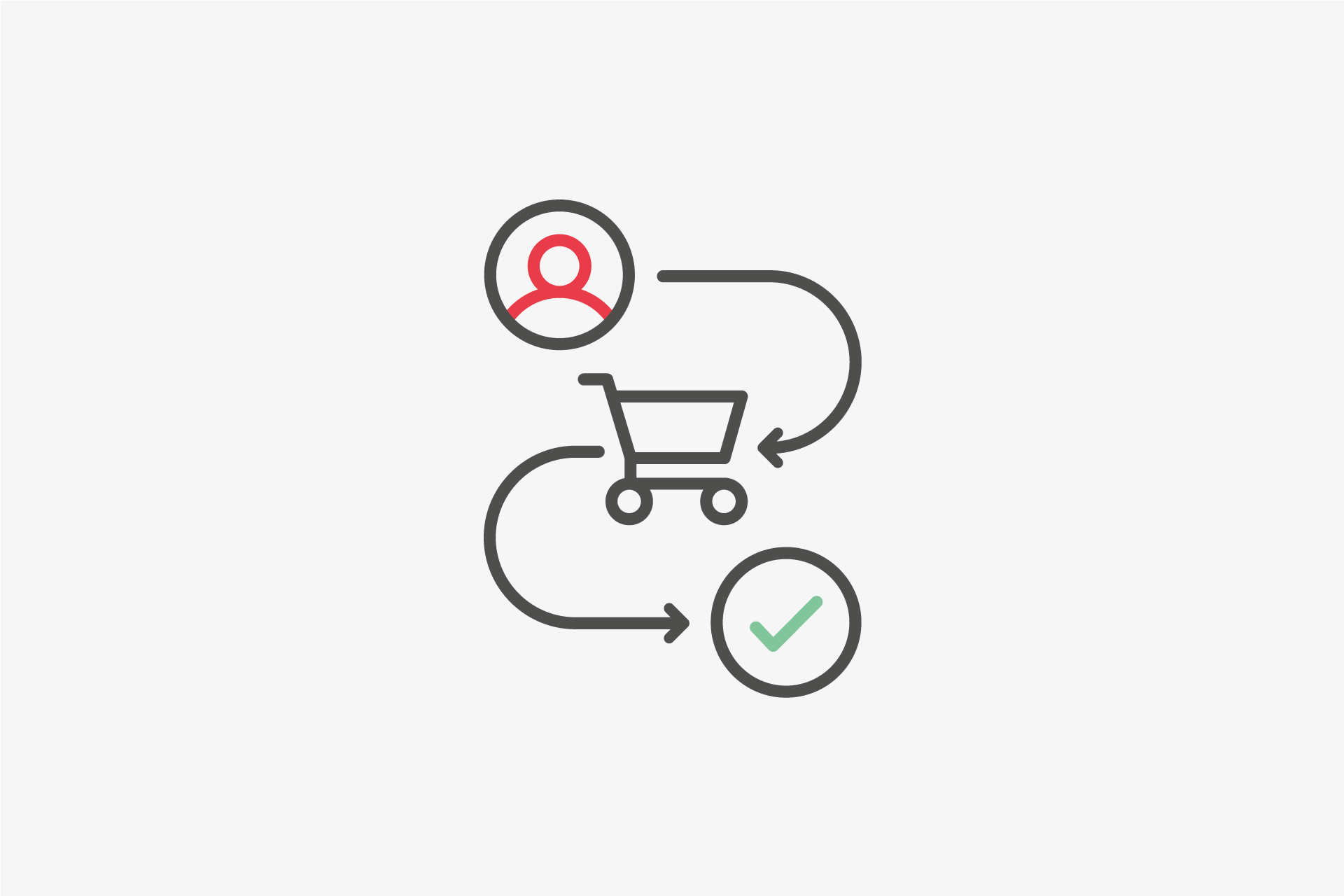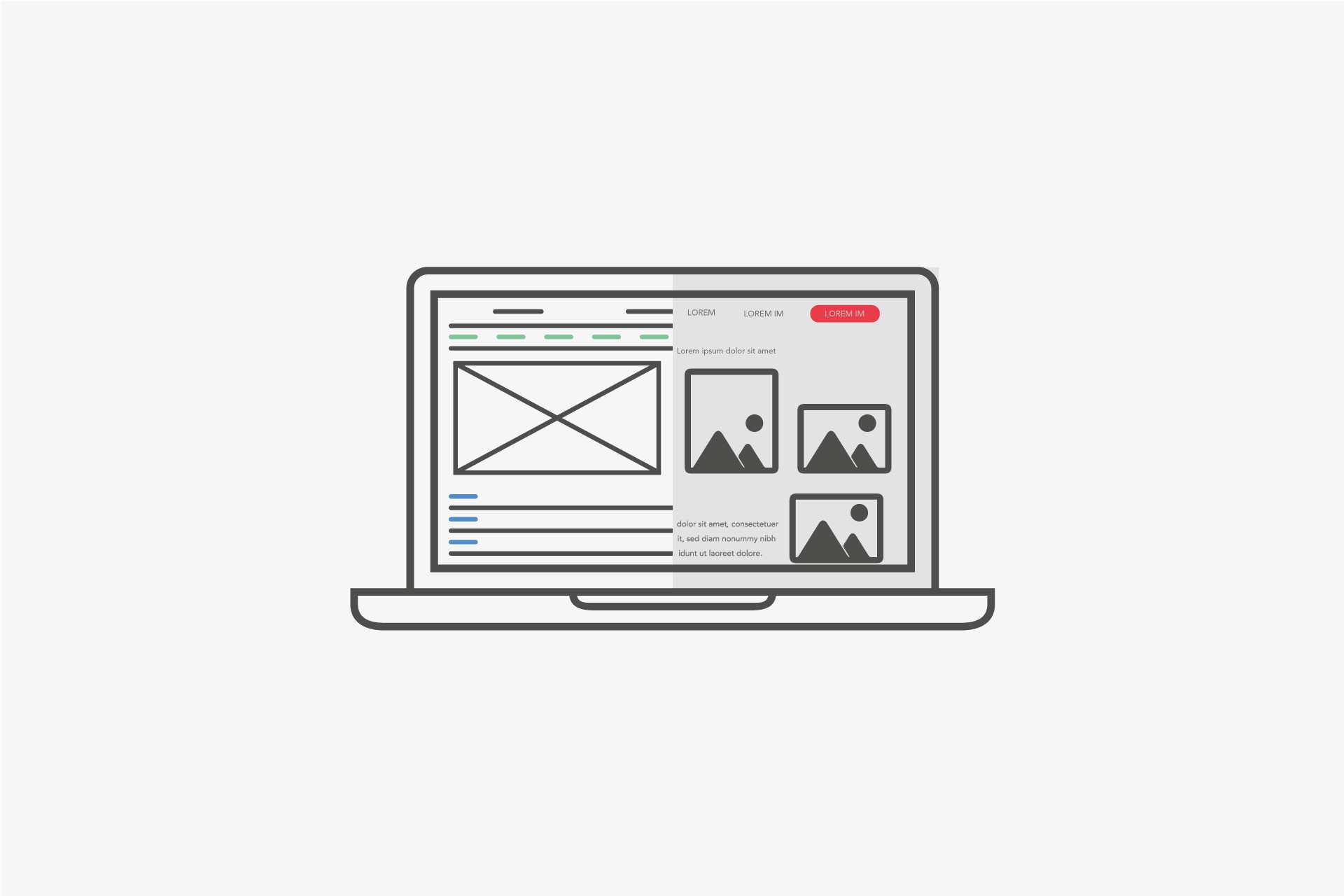Phases of the Booking Journey: DECISION
Planning
Once the user is aware of the need to travel, the planning of the journey begins: the duration of the trip, the destination, the itinerary and the budget. This gives way to the search for the ideal accommodation that fits their needs.
After the COVID-19 pandemic, there has been an accelerated growth in e-commerce and digital users have become true experts when it comes to searching for information to help them make a purchase decision.
Search
In the travel industry, the search process is extensive. It is estimated that the average user begins their research 45 days prior to making a reservation, with an estimated 38 websites visited in total
2.
The number of pages visited increases considerably in the days leading up to the booking date. The search can start with a keyword, which can be as simple and competitive as "Hotels in...". Either on the main OTAs in the market (Expedia, Booking, Despegar) or directly on Google or another search engine.
The SERPs is where the big race to catch the attention of potential customers begins. Whether through SEM ads or organic results through optimized SEO, OTAs show their full weight trying to monopolize the top spots in the search results.
Another major player in the game are metasearch engines, which today serve as the main online showcases for the tourism industry. Google Hotel Ads, Google's metasearch engine, has the great advantage of displaying its results from the first query, one step ahead of the competition (Tripadvisor, Kayak, Trivago among the most relevant).
A good digital distribution management for a hotel has to consider which channels to use in its sales mix, according to its objectives and possibilities. Metasearch engines and OTAs allow the Hotel to gain visibility and positioning, but it is essential that the marketing plan does not end there. With a good rate strategy and a relevant and optimized website, it is possible for a hotel to take advantage of the exposure of online agencies to capture the interest of users and take sales to the direct channel.
It is estimated that the average user begins their research 45 days prior to making a reservation, with an estimated 38 websites visited in total.
Research and Consideration
With all the information available, the user generates a shorter list of options and starts to compare them in order to choose the best option according to their interests, expectations and needs.
At this stage, OTAs and metasearch engines are widely consulted for their ease of comparing different options, segmenting the information through different filters such as rates, location and ranking.
Social networks, particularly Instagram, play an important role in this phase, as users seek references about the hotel's experience and value promise, as well as the comments and opinions of other guests.
In this process it is very likely that the user will try to reach the Hotel's Website, to learn about its offer, rates, special offers and more detailed information that will allow the user to gain confidence in their purchase decision.
It is estimated that 70% of users who make an online reservation visit the hotel's official website beforehand.
It is the perfect opportunity for the Hotel to finish winning the guest's heart, providing that extra that allows them to differentiate themselves from the OTAs: quality information, a better rate, exclusive benefits and personalized attention. It is also a good time for a retargeting campaign to keep interest alive during the user's Decision stage.
Phases of the Booking Journey: Purchase
Reservation
Finally, the user has decided. After weeks or months of searching for information and seeing multiple options available, they have decided on a Hotel. To reach this point, it is essential that the Hotel has made the future guest fall in love with it during the Decision stage.
Now the Hotel faces the most crucial moment in the sales process: getting the traveler to book on the hotel's own website. How to do it?
Although the answer is extensive, there are 2 decisive factors in the Booking Journey;
- An updated and functional Website, which provides confidence in its navigation flow
- Having the best available rate.
The hotel's website is the hub of direct sales, so it is essential that it is optimized. In general, it must have a design proposal consistent with the hotel's branding and an intuitive and easy-to-navigate user experience. With relevant information, properly organized and an integrated booking engine. How many clicks does the user need to make a reservation? What is the proposed funnel for conversion? What payment methods are available? In what currency? What communication channels are available for users to contact us? These are just some questions to be answered.
The second important factor for decision-making is the rate, excluding of course luxury hotels where cost is not a determining factor. It is essential that the Direct Channel has the lowest rate among the options available on the Internet. A rate strategy that plays in favor of the property (Channel Management's task together with Revenue Management) using OTAs to gain presence and visibility but driving conversion to the direct channel.
Users feel more secure booking on the hotel's website than through an intermediary, as long as your website complies with the 2 factors mentioned above; an optimized website and the best rate available online.
The user makes his reservation and makes it through the direct channel; the hotel's website. This implies a higher profit margin by not having to pay commission to the OTAs and, not least, we have the user's data. It is the beginning of a relationship that if managed correctly can be long term.
.



